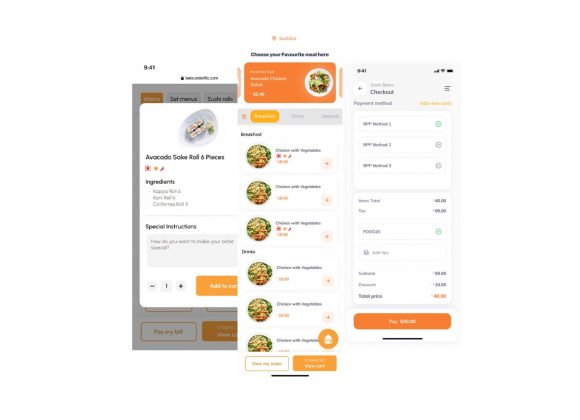Introduction
Managing suppliers effectively can make or break the smooth sailing of your supply chain. With supplier management software, you can usher in a new era of seamless integration, enhancing procurement processes and fostering high-performing supplier relationships. This digital transformation enables efficient data sharing and collaboration, bolstering supplier compliance and performance. Moreover, the integration aspect is crucial, as it provides a stable platform for all trading partners, including vendors, to come together. From supplying essential purchase order details to maintaining a transparent supplier portal, this solution assists in every step. The software, akin to an all-knowing service provider, also ensures privacy compliance, securely handling personal information across multiple websites. Its compatibility with popular ERP systems like Microsoft Dynamics further amplifies its functionality. By embracing this tool, you are improving your supply and inventory management and ensuring a vendor-friendly environment that promotes better relationships and a more streamlined procurement process. Supplier management software integration is not a fleeting trend but a necessary step toward a more efficient and data-driven future.
Why You Need Supplier Management Software

The dynamics of the supplier landscape require a robust system to manage the various facets of supplier-related activities. Supplier management software is a game-changer. Here’s why:
1. Manage Suppliers Through A Dedicated Portal
With Supplier Management Software, you can simplify and streamline your procurement processes. This is achieved by automating numerous manual tasks, reducing errors, and enhancing efficiency. For instance, the software can automatically generate purchase orders based on preset conditions, saving valuable time and resources. It can also maintain a comprehensive supplier information database, making it easily accessible for quick decision-making.
Moreover, the software provides advanced analytics and reporting capabilities, allowing you to gain valuable insights into your procurement operations. You can track supplier performance, analyze spending patterns, and identify cost-saving opportunities. With these detailed insights, you can make data-driven decisions to optimize your procurement strategy and achieve better outcomes.
Furthermore, the Supplier Management Software integrates seamlessly with other systems and tools, such as inventory management and accounting software. This ensures a smooth flow of information across different departments, eliminating data silos and enhancing collaboration. By centralizing all procurement-related processes, you can improve cross-functional visibility and coordination.
In addition, the software offers customizable workflows and approval processes tailored to your organization’s specific needs. You can define rules and guidelines for supplier onboarding, contract management, and purchase requisitions. This helps to enforce compliance and ensure consistent adherence to your procurement policies.
Supplier Management Software empowers your procurement team to focus on strategic decision-making by automating these tasks and providing advanced features. This enhances your procurement process’s overall productivity and effectiveness, driving cost savings and improving supplier relationships.
2. Automate Supplier Onboarding
Automating supplier onboarding is a crucial and time-saving feature of Supplier Management Software. This feature allows businesses to streamline and integrate new suppliers into their supply chain, ensuring a seamless transition. The software guarantees effective and efficient supplier integration by efficiently collecting and processing necessary data, saving valuable time and resources.
Furthermore, the automated onboarding process simplifies the overall supplier management, allowing businesses to focus on other essential aspects of their operations. This promotes productivity and growth and enhances the overall effectiveness of the supply chain management system.
With the software expertly handling the onboarding process, businesses can confidently expand their supplier network while maintaining high efficiency. This empowers companies to forge stronger partnerships, foster innovation, and deliver exceptional customer products and services.
3. Mitigate Supplier Risk
Effective supplier risk management is pivotal in a business’s supply chain strategy and the Supplier Management Software significantly aids in achieving this. The software provides a detailed risk profile for each supplier, utilizing data analytics and industry-standard risk assessment models. This enables businesses to proactively anticipate and manage potential supplier risks, such as supply disruption, quality issues, or compliance breaches.
Moreover, the software’s continuous monitoring feature ensures that any changes in a supplier’s risk profile are promptly identified and addressed. Automated alerts can be set up for specific trigger points, thereby ensuring timely remedial actions. These capabilities also prove beneficial in achieving regulatory compliance and maintaining good public relations.
The Supplier Management Software enables a comprehensive approach to supplier risk management, covering risk identification, assessment, mitigation, and monitoring. By integrating these processes, you enhance risk management capabilities and create a safer, more reliable supply chain.
4. Track And Report On Supplier Performance And Spend
Utilizing the Supplier Management Software, businesses can efficiently track and evaluate their suppliers’ performance and expenditure. The software’s analytics component offers comprehensive data visualization, allowing for real-time tracking of key performance indicators (KPIs). These may include delivery reliability, product quality, and cost efficiency. With this, you can measure suppliers against your established benchmarks and make informed decisions about future partnerships.
Moreover, the software enables robust spend analysis, giving you insights into procurement costs associated with each supplier. With detailed graphs and charts, you can identify cost-saving opportunities, negotiate better contracts, and streamline your expenditure. The reporting feature generates easy-to-understand reports, presenting an overview of the procurement landscape, assisting in strategic planning and budgeting.
In essence, Supplier Management Software offers transparency in your procurement process. Its tracking and reporting features ensure that you’re well-equipped to manage supplier relationships, maintain high performance standards, and optimize procurement spending. This tool gives you the power to drive value in your supply chain, thus facilitating sustainable business growth.
5. Manage Data Effectively Through Integrations
The final advantage of the Supplier Management Software is its ability to effectively manage data through multiple integrations. With an increasing amount of data being shared across different platforms and departments, it’s crucial to have a centralized system for efficient data management. The software integrates seamlessly with various other business tools such as CRM, ERP, and finance systems, ensuring a consistent flow of data. This eliminates the risk of data duplication or loss, enhancing overall data integrity.
The software also features data analysis capabilities that transform raw data into actionable insights. This helps in identifying trends, formulating strategies, and making informed procurement decisions. Moreover, the software’s cloud-based nature enables secure data storage and easy access, ensuring that users can retrieve information anytime, anywhere.
In conclusion, Supplier Management Software is a comprehensive solution that not only simplifies your procurement processes but also enhances supplier relationships, manages supplier risk, and offers valuable insights into supplier performance and expenditure. It serves as a hub for efficient data management through its integration capabilities. Adopting this software is a strategic move towards a more efficient, transparent, and data-driven procurement process.

Conclusion
In conclusion, Supplier Management Software is an essential tool in today’s complex procurement landscape. It not only streamlines management and onboarding processes but also empowers you with actionable insights into supplier performance, expenditure, and risk. This software, with its advanced analytics and integrations, is a catalyst for an efficient, transparent, and data-driven procurement future. It’s not just a game-changer; it’s a strategic partner that will help you navigate the ever-evolving supplier landscape with ease and agility.
Ready to transform your procurement process? Schedule a demo with Orderific today, experience the power of our Supplier Management Software, and take a significant step towards a seamless, productive, and rewarding supplier management future. Let us help you turn your procurement challenges into opportunities. Schedule a demo now.
FAQs
What are the advantages of integrating supplier software into a company’s operations?
Integrating supplier software enhances efficiency, streamlines procurement processes, provides valuable insights, and improves supplier relationships.
What challenges might businesses encounter when attempting supplier software integration?
Some challenges include resistance to change, data migration issues, lack of technical expertise, and high cost of integration.
Can you provide examples of successful supplier software integration cases?
Sure, examples include companies like Amazon and Apple that have successfully integrated supplier software to optimize their supply chain operations.
How does supplier software integration contribute to supply chain efficiency?
Supplier software integration enhances supply chain efficiency by automating processes, reducing errors, and providing valuable data-driven insights.













